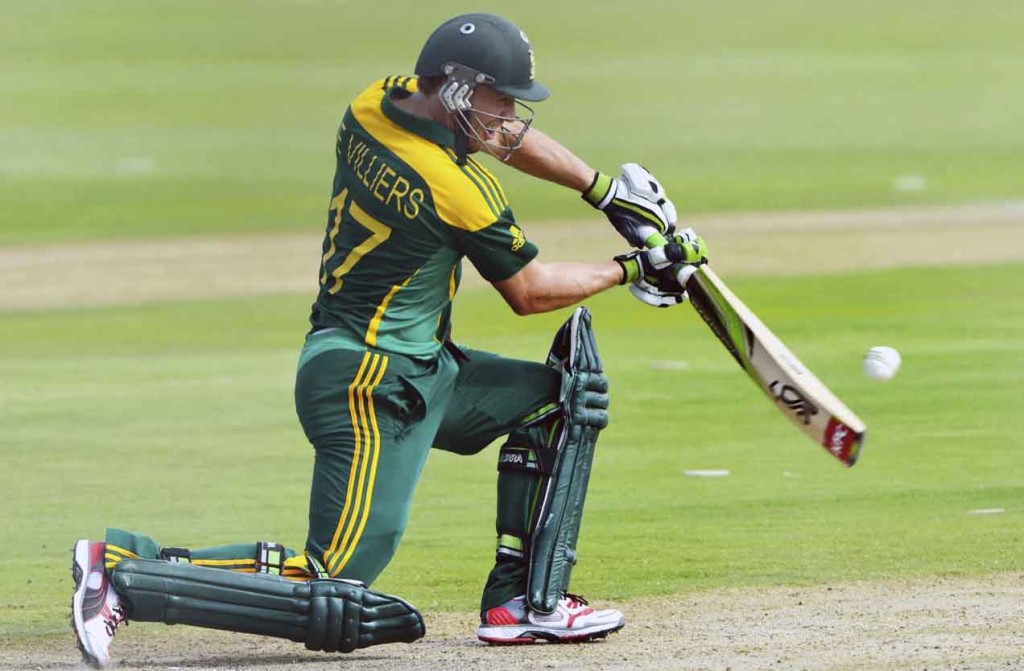AB de Villiers is the most complete cricketer in the world and South Africa’s chances of winning the World Cup depend on him.
South Africa are by no means a one-man team, but his value is undeniable. He’s the glue in the side and if he’s off colour the shortcomings of those around him are amplified. This was again apparent in the fourth ODI in Melbourne.
De Villiers hit 91 off 88 balls to go past 7 200 runs in his 175th ODI. His stats are remarkable in that it shows how consistent he is in all forms of the game. His ODI average is over 51, which is the same as his Test average after 95 games. He has now hit 14 500 runs in Test and ODI cricket and he’s not yet 31 years old.
In Melbourne he glided past Mark Waugh, Adam Gilchrist, Michael Bevan and Gary Kirsten in terms of the leading run scorers in matches played between Australia and South Africa (1 189), and now only Ricky Ponting, Jacques Kallis, Jonty Rhodes, Steve Waugh, Hansie Cronje and Herschelle Gibbs are above him.
And in this series he’s the top-scorer on either side with 271 runs in four knocks at an average of 67.75.
He’s a superb fielder – an accomplished wicketkeeper as well – a captain who continues to learn, and as this series has shown, he can turn his arm over with some success as well. Little wonder he was last week named the ICC’s ODI Player of the Year, but why did they stop there? He should also be the ICC’s Cricketer of the Year, full stop.
The match at Melbourne also put the burning debate to bed as to where he should bat in the order. The Proteas changed their starting XI for the fourth ODI – and they looked a weaker batting line-up for it – but the success was elevating De Villiers to No4 in the order. That is where he must stay. He’s the best batsman in the world and he needs to be at No4, instead of No5, to maximise his time at the crease.
He scores so freely – again he was the only South African to go along at quicker than a run a ball, and his 7 210 ODI runs have come at a strike rate of 96, which is phenomenal – and there are times when you feel the only way you’re going to get him out is if he gets himself out. And that was the case in Melbourne when he swatted Pat Cummins to Steve Smith at mid-wicket.
‘He is so effective because he moves around in the crease so much,’ Australian fast bowler Mitchell Starc said afterwards. ‘It’s tough to bowl to him.’ And Cummins himself expressed that there was an element of luck in getting De Villiers’ wicket. ‘I didn’t do anything special. He just chose the wrong ball to come down the wicket to (a bouncer). It looked like it was a pre-meditated shot.’
In Melbourne De Villiers and David Miller put on 122 after Faf du Plessis had fallen to leave the score 77-3. This was the second century partnership the pair have compiled this series and it’s clear that Miller is benefiting from batting with De Villiers. It’s as if he has a calmer approach and there is little panic to his strokeplay. Just having De Villiers at the other end of the pitch is a wonderful blanket for the powerful left-hander.
So, South Africa’s batting line-up is taking shape for the World Cup. It has to be Quinton de Kock, Hashim Amla, Faf du Plessis, AB de Villiers, David Miller and JP Duminy batting in Nos 1-6.
It becomes more tricky from there. The Proteas only managed to score 82 from their last 15 overs when staring 300 in the face at 209-4 after 38 overs. And they only put on 51 runs in their last 10 overs as they were pegged back to 267-8.
As we go into the fifth and final ODI in Sydney and with six matches remaining before South Africa begin their ODI campaign, some things are clear – others not so. But they certainly are, deservedly so, one of the big favourites for the World Cup, although much will depend on De Villiers carrying the form of his life over to the tournament itself.
When he’s batting it’s as if he’s playing on a different surface to anyone else.
Photo: Backpagepix





